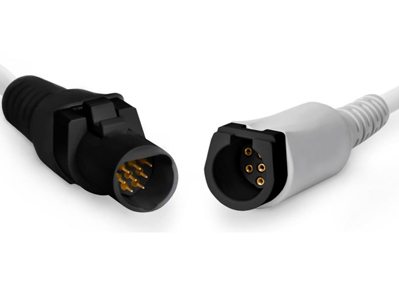Autoclave sterilization of mechanical surgical and dental instruments used in invasive procedures is well known and has been used for many decades to assure the equipment is free of dangerous contamination (viruses, bacteria, fungus, etc.). Traditionally, these instruments are made of metals (such as stainless steel or anodized aluminum) which can easily withstand the autoclave environment. Similarly, electronic medical equipment often must also be sterilized between patients, but since these typically contain plastic components, care must be taken to choose plastics which will endure many of these steam sterilization cycles. The connectors used on these medical devices need to bear the autoclave environment as well. However connectors can be made with a variety of plastics, so to be autoclavable, the plastic from which these are crafted must not melt, deflect, or change their electrical properties during the process.
To assure that connectors can be used in applications requiring autoclave sterilization, a range of tests should be performed:
- Low Level Contact Resistance Test (Specification: EIA-364-23C)
- Mating/Unmating Force (Durability) Test (Specification: EIA-364-09C / EIA-364-13D)
- Dielectric Withstanding Voltage (DWV) Test (Specification: EIA-364-20E)

Designed to withstand up to 20 autoclave cycles, D Series delivers industry-leading performance featuring simple push-button latching and a "D" shaped flange which makes mating orientation obvious. There are three D Series sizes that accommodate a wide variety of applications.. Intuitive and durable D Series is recognized for its ease of use and high reliability.
Conclusion
Connectors made of high temperature Ultem polyetherimide plastic should exhibit little or no change in performance after exposure to multiple autoclave sterilization cycles that are typically used in medical applications.Connectors like the D Series are have met met these testing requirements and therefore are suitable for use in medical device designs which require this type of sterilization between uses.


